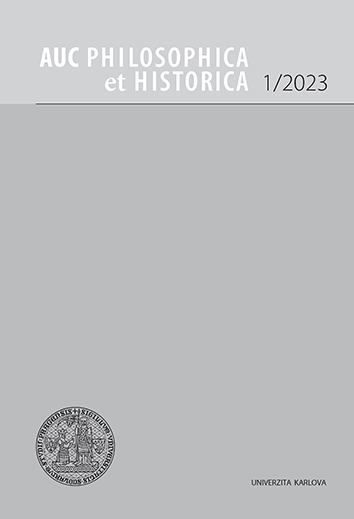AUC Philosophica et Historica je víceoborový akademický časopis zaměřený na humanitní a společenskovědné obory (filozofie, psychologie, pedagogika, sociologie, obecné, české a hospodářské dějiny, pomocné vědy historické a archivnictví, etnologie).
Časopis je indexován v databázích CEEOL, DOAJ a EBSCO.
AUC PHILOSOPHICA ET HISTORICA, Vol 2010 No 1 (2010), 101–124
Význam národního teritoria a hranice pro národní sebeuvědomování Finů v 19. a na začátku 20. století
[The Importance of National Territory and Border for the National Selfconsciousness of Finns in the 19th and Beginning of the 20th Century]
Tomáš Masař
zveřejněno: 18. 05. 2015
Abstract
The Importance of National Territory and Border for the National Selfconsciousness of Finns in the 19th and Beginning of the 20th Century The creating of integrated Finnish state under the rule of Russian tsar in the year 1809 was one of the turning points in the Finnish history. Since this time Finland became compact administrative unit within the Russian empire with large autonomy and self-government. Moreover since this time the Finnish national movement started to gain more ground and influence in the everyday life of Finns. We can even say, that with birth of Finnish state also emerged Finnish political selfconsciousness. The main aim of this study is to show, how the creating of the Finnish state and his borders influenced Finnish nationaly identity and self-confidence. The first part is trying to introduce the theoretical frame dealing with relation between national border and national identity mostly coming from the works of Finnish geographer Anssi Paasi. The spatial socialization of citizens with their land was among of mother tongue, church and national culture one of the corner stones of Finnish national identity. The Finnish frontier also played important role in using the dichotomy we/other, while defining Finns against other nations especially Russians. This was even raised by Finns as considering their own land as the last point of europian civilisation with the barbarian Orient behalf of their borders. One of the most common patterns used to strenghten the bond between the country and the nation, was using the national symbols, e.g. Fatherland or some mythical person, which should symbolise the whole country (Finnish maiden). Second part of the paper represent the changes of the Finnsh eastern border from the 13th century until nowadays. Especially in the 19th and 20th century played creation of the Finnish-russian border crucial role for Finnish national movement and later on also independence. In the last part of the study is described how the theoretical concepts were used in practical life in Finnland in the 19th and the beginning of the 20th century by Finnish artists, writers, composers and among all the leaders of national movement. As a particular examlpe were chosen two books coming from two writers and important leaders of Finnish national renaissence in th second half of 19th century. By analysis of these two masterpieces of Finnish literature, Maamme kirja (The Book of our Land) from Zacharius Topelius and Oppikirja Suomen kansan historiassa (Schoolbook of the Finnish Nation in History) from Yrjö Sakari Yrjö-Koskinen, we can point out the importance of Finnish national territory and borders for national identity and self-confidence of Finns. Through these and also many other books writen by another great Finnish authors Finns were allowed to learn about rich national history and geography of their native land.
